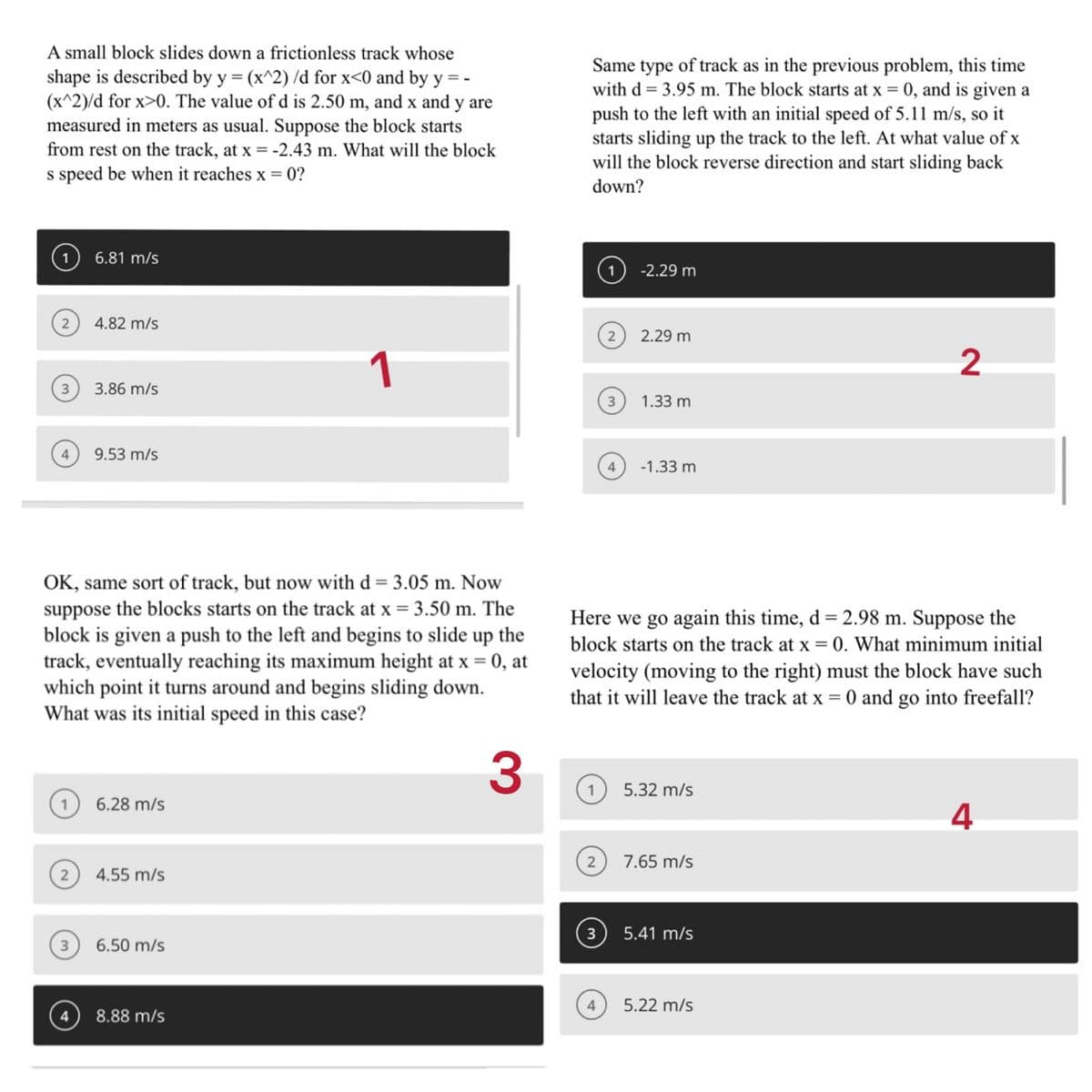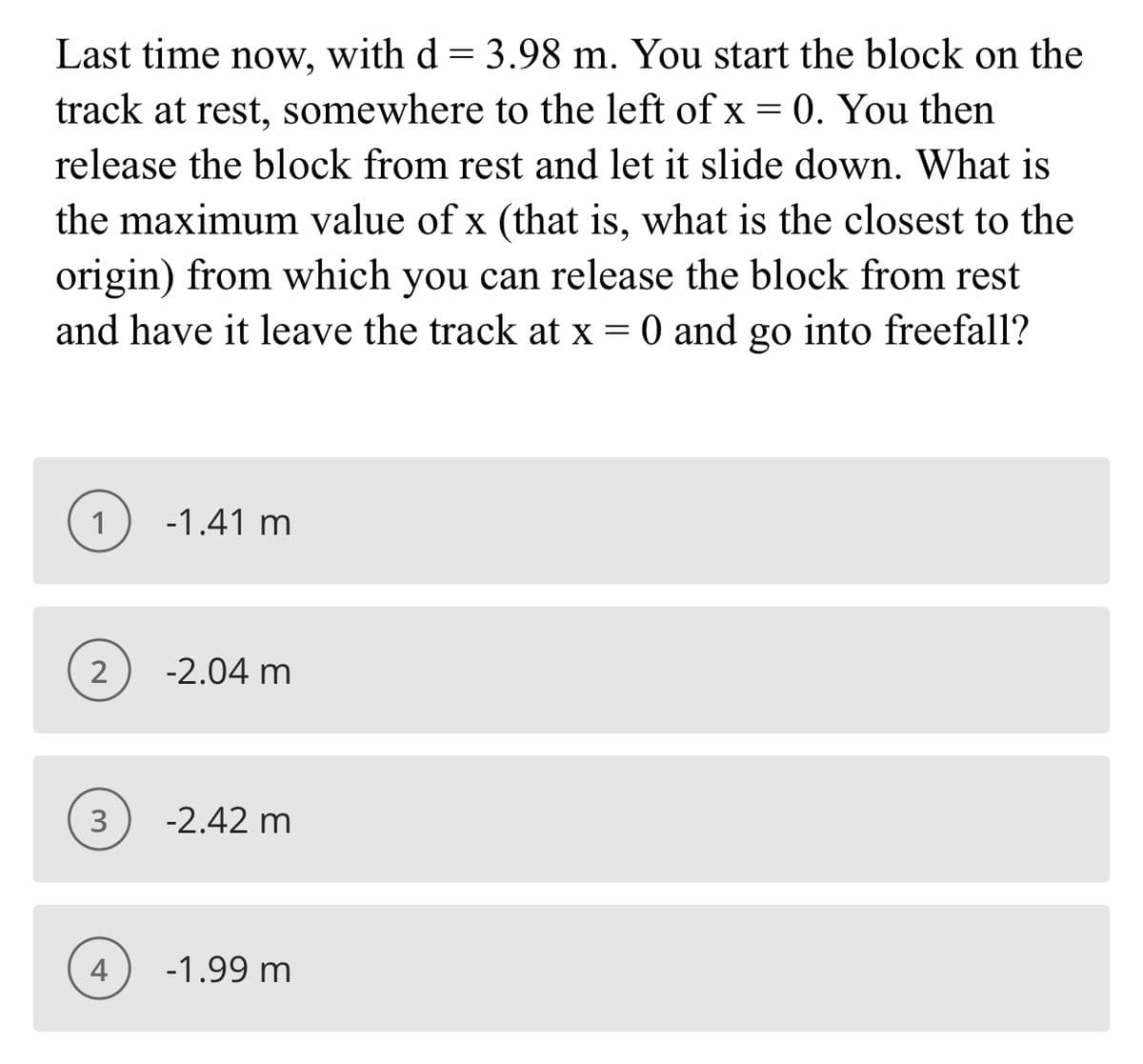Last time now, with d = 3.98 m. You start the block on the track at rest, somewhere to the left of x = 0. You then release the block from rest and let it slide down. What is the maximum value of x (that is, what is the closest to the origin) from which you can release the block from rest and have it leave the track at x = 0 and go into freefall?
Displacement, Velocity and Acceleration
In classical mechanics, kinematics deals with the motion of a particle. It deals only with the position, velocity, acceleration, and displacement of a particle. It has no concern about the source of motion.
Linear Displacement
The term "displacement" refers to when something shifts away from its original "location," and "linear" refers to a straight line. As a result, “Linear Displacement” can be described as the movement of an object in a straight line along a single axis, for example, from side to side or up and down. Non-contact sensors such as LVDTs and other linear location sensors can calculate linear displacement. Non-contact sensors such as LVDTs and other linear location sensors can calculate linear displacement. Linear displacement is usually measured in millimeters or inches and may be positive or negative.
Hi, this is a set of 5 questions, I've answered 4 as shown in the photos please help solve the fifth question in the second slide.


Trending now
This is a popular solution!
Step by step
Solved in 5 steps with 2 images






